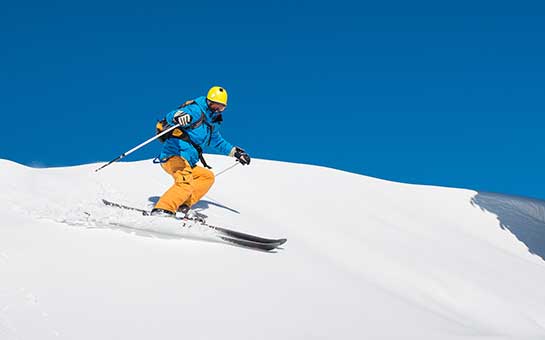Skiing is the most popular winter sport. If you’ve had a taste of it, you are bound to return for more. It combines the joy of the great outdoors with the adrenaline rush of zooming down snow-covered slopes at high speeds.
If you are heading to the snow-capped ski slopes for the skiing season, you know you’re risking injuries. Secure yourself from the financial implications of medical care with hazardous sports travel insurance. Skiing is a risky adventure sport, and a skiing travel insurance plan will help cover your medical bills if an unexpected accident or injury occurs.
Travel Insurance for Skiing
Why be bothered with medical bills while on vacation? If you secure yourself with extreme sports travel insurance, then no sports accidents (big or small) will affect your finances too heavily.
In most countries, medical costs of recovery from injuries sustained during adventure sports are massive. For this reason, most standard travel insurance plans don’t cover adventure sports. Safeguard your finances with a skiing travel insurance plan to ensure you have the coverage you need for a ski vacation. The best travel insurance for skiers will also cover damage to your equipment. With skiing travel insurance, you can hit the slopes with peace of mind and enjoy the ride.
Basics of Skiing
Skiing is an age-old method of transportation in snow-covered regions. Around the 13th century, skiing was incorporated into the military as a method of reconnaissance. From there, it quickly developed into a competitive sport.
Modern skiing is divided into three categories: Alpine, Extreme, and Nordic. Each of these has a distinct set of activities and requires different equipment.
Alpine skiing includes downhill skiing and backcountry skiing. Downhill skiing is where you ski down a well-groomed slope, and then ride back up to the top using a cable car (or ski lift) and do it again. Beginners usually start off with the gentle slopes, but with practice and training, you can move on to faster and steeper slopes to satisfy your speed thrills. Backcountry skiing is relatively riskier, as the trails are not groomed and can be unpredictable.
Extreme skiing is the riskiest ski activity. It is attempted only by skilled and trained individuals. One example of extreme skiing is heli-skiing—the pinnacle of ski adventures, in which you travel to the backcountry on a helicopter and then ski down thousands of feet of elevation uninterrupted. Heli-skiing is, of course, extremely risky because there is no way to get immediate help if an accident occurs. Similarly, freestyle skiing is all about doing stunts and tricks. It involves jumps, spins, and complicated maneuvers performed at high speeds. Unsurprisingly, freestyle skiing also has the highest rate of injuries.
Finally, Nordic skiing is done on relatively flat ground and often involves cross-country trails. This is safest type of skiing. But it demands a lot of endurance and stamina to cover such long trails, and exhaustion in the middle of a frozen wilderness is its own type of disaster.
Risks of Skiing
Skiing is a high-risk hazardous sport. You will need skill and training before you can attempt the riskier trails. But even then, accidents can still happen based on factors like the quality of the snow, the weather, and equipment failures. You should secure yourself with a hazardous sports travel insurance plan before you start skiing.
Downhill skiing has a high rate of injury because any slight mistake at high speed can quickly spiral out of control. Backcountry skiing and heli-skiing both involve the ever-present risk of an avalanche. Nordic skiing is the safest ski activity, but it just doesn’t offer the same adrenaline rush.
